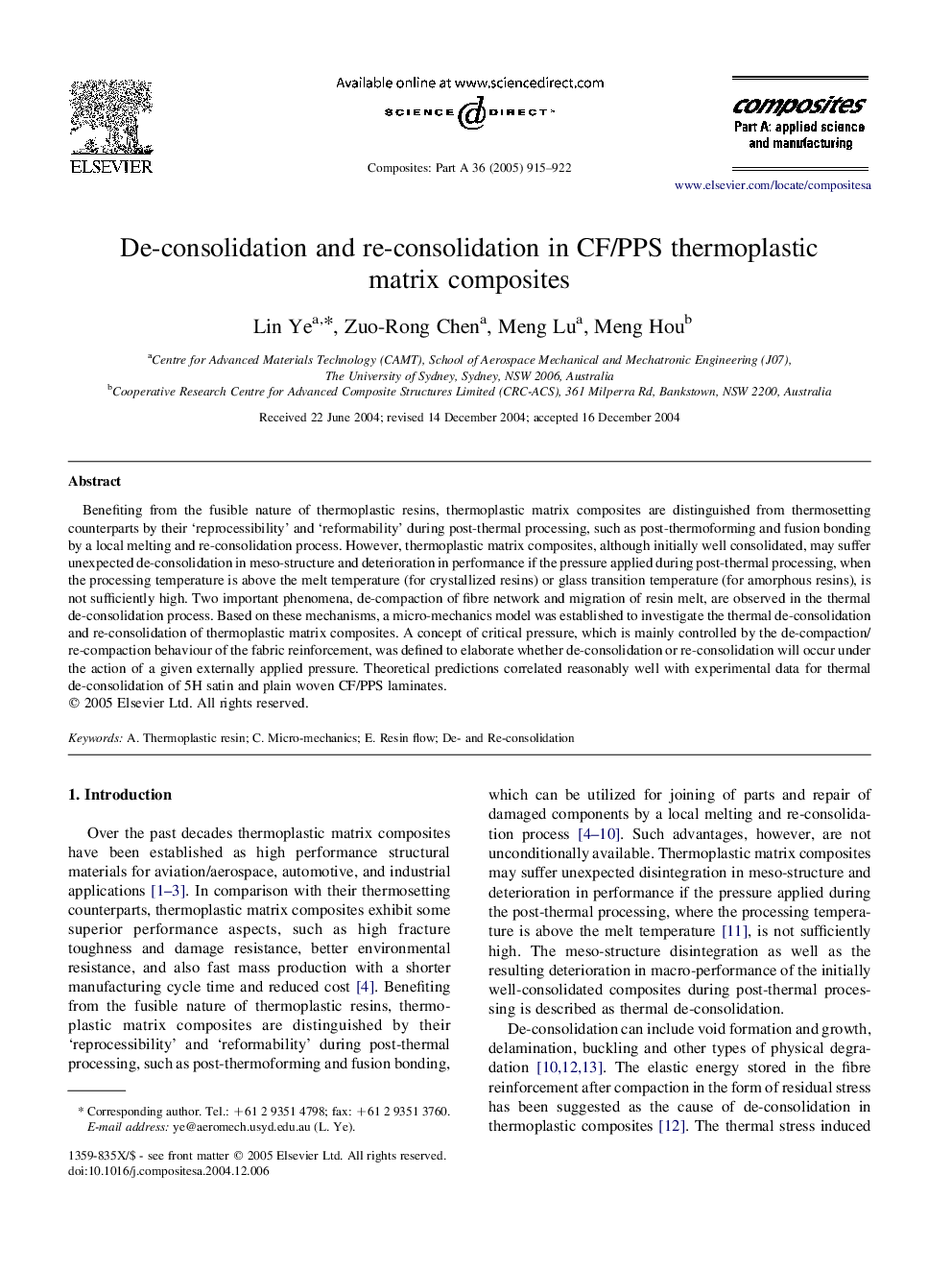| Article ID | Journal | Published Year | Pages | File Type |
|---|---|---|---|---|
| 10628208 | Composites Part A: Applied Science and Manufacturing | 2005 | 8 Pages |
Abstract
Benefiting from the fusible nature of thermoplastic resins, thermoplastic matrix composites are distinguished from thermosetting counterparts by their 'reprocessibility' and 'reformability' during post-thermal processing, such as post-thermoforming and fusion bonding by a local melting and re-consolidation process. However, thermoplastic matrix composites, although initially well consolidated, may suffer unexpected de-consolidation in meso-structure and deterioration in performance if the pressure applied during post-thermal processing, when the processing temperature is above the melt temperature (for crystallized resins) or glass transition temperature (for amorphous resins), is not sufficiently high. Two important phenomena, de-compaction of fibre network and migration of resin melt, are observed in the thermal de-consolidation process. Based on these mechanisms, a micro-mechanics model was established to investigate the thermal de-consolidation and re-consolidation of thermoplastic matrix composites. A concept of critical pressure, which is mainly controlled by the de-compaction/re-compaction behaviour of the fabric reinforcement, was defined to elaborate whether de-consolidation or re-consolidation will occur under the action of a given externally applied pressure. Theoretical predictions correlated reasonably well with experimental data for thermal de-consolidation of 5H satin and plain woven CF/PPS laminates.
Related Topics
Physical Sciences and Engineering
Materials Science
Ceramics and Composites
Authors
Lin Ye, Zuo-Rong Chen, Meng Lu, Meng Hou,
